We set off from dreary Kapan on the 12th of September in depressing and drizzly rain, and began to wind our way up the final mountain pass before the Iranian border. Luckily, the weather cheered slightly as we climbed, and after we crossed the mountain it became a beautiful sunny day. As we descended, we spotted a cyclist and pulled over for a chat. Turned out he was from Australia, and cycling to Europe having started in Kyrgyzstan. We offered him our leftover Armenian, Georgian and Turkish shrapnel, and received some Iranian rials and a map of Tabriz in return. We also insisted that he take some cakes for the climb, as we had a plentiful supply and are only lazy motorcyclists. It was a useful exchange for both parties.
The Armenian exit post was a totally different experience to the entry. Soldiers initially checked our passports, then Oli and I had to go through separate queues for passport checks as passenger and driver. Following this, we drove to another check-point for a further passport inspection and exit stamps. Oli committed a faux pas and accidentally showed his Turkish passport, which caused the mood to sour slightly and the border guard to ask to search our luggage. Luckily however, when he asked what we had seen in Armenia and Oli mentioned the genocide museum, he became slightly more friendly. He asked Oli what he had thought, and Oli replied that he had felt it was important to go, as it is always a terrible shame to lose so much human life. At this, the search swiftly ended, and the guard shook Oli's hand, told him he was a good man, and waved us through for a final passport check from another soldier. We later found out that this border is Russian operated, which explained the stark differences in how it was run.
After finally successfully exiting Armenia, we then drove across the bridge to the Iranian side. There was an issue with my visa (possibly the spelling error in my name which I had noticed earlier, but was hoping would be okay...), and I had to have all my fingerprints taken again. We discovered it is possible to be bad at this, and it took several attempts before the poor patient policeman received an acceptable set of prints from me. Aside from the police officer, hardly any of the staff at the border wear uniforms, and are fairly indistinguishable from the other travellers and lorry drivers milling around, which definitely complicates things. After successfully negotiating the various stages and almost three hours of paperwork, Oli, the bike and myself were done and free to go. Everyone working there understood Turkish, which was a huge help.
The Iranian roads were instantly better than Armenia, and we wound our way through beautiful and dramatic scenery towards Tabriz. Sadly, as the road hugs both the Azerbaijani enclave and Armenian borders we couldn't take many photos, lest we get arrested as spies.
On arriving into Tabriz we discovered that the texts we had been sending to our Couchsurfing host had not been getting through. Luckily, somebody stopped their car to check we were okay, and we were able to borrow their phone to call our host. It turned out he had needed to leave Tabriz due to a family problem and would not be back until the following day. However, our host (who is an English teacher) sent two of his students, Ali and Mohammed, to collect us and take us to a hotel. Whilst we waited for them, numerous other people stopped to see if we were ok, offering us places to stay and asking if they could help. They were all delighted to learn that Oli was Turkish, clapping him on the back and declaring that they were brothers.
We followed Ali and Mohammed's motorbike on a fast paced ride through the city, involving exciting forays onto the pavement and down bus/taxi only lanes. When the boys discovered that we had not yet had a chance to change any money, they insisted on going out to find us some food. Despite us trying to persuade them that we would be okay, off they went, promising to be back shortly. They returned with enough food to feed a small army. It was delicious, and Oli and I managed to put a sizable dent in it before collapsing into bed.
We were met the next morning by Mohammed, who gave us a walking tour of the centre of Tabriz. As Friday is the Iranian equivalent of Sunday, the streets were very quiet. We wandered around the covered bazaar (the largest in the world). The vast majority of the stalls were closed, and we enjoyed the almost eerie atmosphere. We ate at the one open restaurant, and the boys munched down lamb kebabs which were apparently amazing. This is definitely not a veggie friendly part of the world, so I filled up on plain rice and bread.
Our last stop for the day was the museum, where as well as some interesting historical objects we saw the hall of carpets. This was a huge room displaying enormous carpets as works of art. The intricate patterns and designs looked stunning, even more so given the massive scale. Somewhat interestingly, the main feature of the room was a carpet featuring the Ayatollahs Khomeini and Khamenei and other important figures. After a fun but tiring day, we were met in the evening by our Couchsurfing host David, and went back to his house for some dinner and a well deserved rest.
In the past, David was an English teacher at a local high school, but now in his retirement is running his own English learning institute. It was here that we began our next day in Tabriz, and felt privileged to be able to sit in some of the classes and meet the students. The younger group were so adorable that when they sang us one of their songs, they were cute to the point I could have cried. There was also an older group, and although they were only 10 – 15 years old, we were very impressed by their level of English.
In the early afternoon we took a day trip to Kandovan. David was originally from the village, and wanted to show us the sights. Kandovan is famous for two things, the first being its mineral water which apparently has curative qualities. Apart from this, it is most widely known for its cave houses, as the majority of dwellings are carved into the rocks. The original settlement was just a short way down the road, but destroyed by an earthquake around the 13th century. Seeing that the rocks were unchanged, the villagers decided to rebuild here instead.
Tourism is big business here, with mostly Iranian visitors bringing good money to the village. Although many of the houses have been converted into shops selling souvenirs and handmade goods, the majority still seem to be functioning as traditional dwellings. The streets wind steeply up the hillside, and away from the main tourist streets normal village life continues. Before heading back to Tabriz, we stopped by at David's mother's house for tea, bread and delicious home made yoghurt and cheeses. Kandovan is certainly an interesting place, even more so as we had a local as our guide!
We popped home for a quick late lunch and a short rest, then headed back to the institute to meet some of the older students. We spent a wonderful hour chatting with them about life in our two countries. They were especially interested in how people in England see Iran, and we had a good laugh at people having the impression that it was dangerous, as so far it feels like the safest and friendliest country we have ever visited. The time passed too quickly, and before we knew it, it was time to go home and wish everyone goodbye. We enjoyed another lovely meal with David and his family, then popped over to one of the English teacher's houses for a visit. She was incredibly nice, and we almost felt like we were back in Turkey with the amount we were fed as visitors!
That evening was our last in Tabriz, and we were up and about early, swinging by the institute to pick up the bike from its safe garage parking spot. As it was on our way to the Caspian coast, Oli and I had decided to stop at El Goli en route. We mentioned this whilst at the institute, and three of the boys offered to come with us to show us the way. Knowing what a nightmare it is to get out of an unknown city, we readily accepted.
El Goli itself was originally built in the late eighteenth century, and is a beautiful public park. The main feature of the area is the large square lake, with a grand structure in the centre. Contrasted against a backdrop of city high rises, it is a beautiful and peaceful place. We strolled in the sunshine, chatting to the boys about their interests and life in both Iran and the UK. They were good hosts, and looked after us wonderfully. As well as paying for our entry into the park, they also insisted on buying us teas, which provided much needed refreshment before the next part of our journey.
Tabriz had been an excellent and wonderfully warm introduction to Iran, and the fact that almost everyone in this region understands Turkish made communication a breeze. We started to see what people mean when they say you have to try really hard to have a bad time when visiting this country, and were excited to explore further.
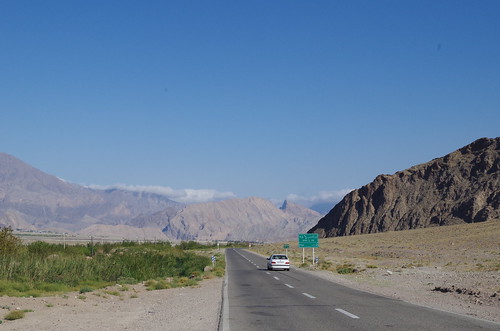
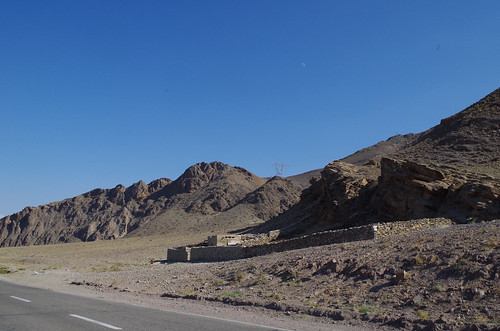
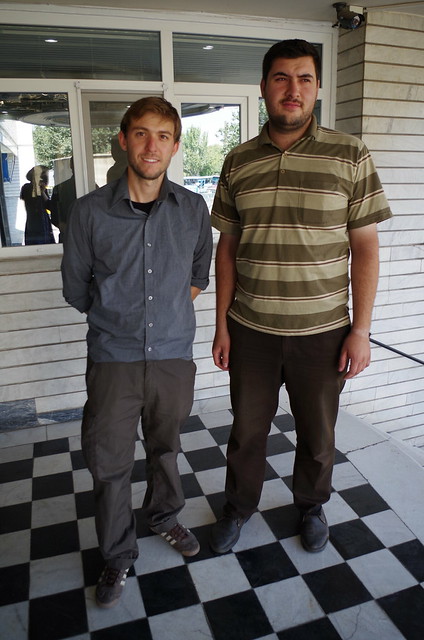

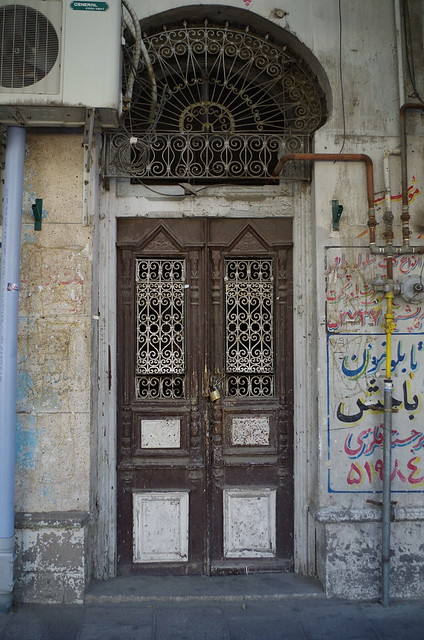



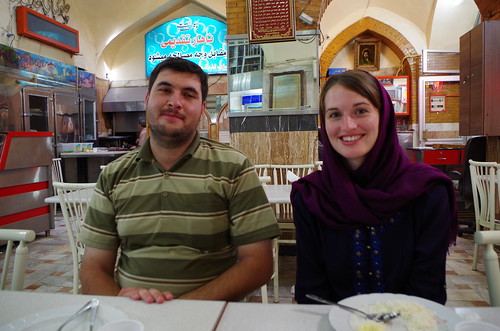
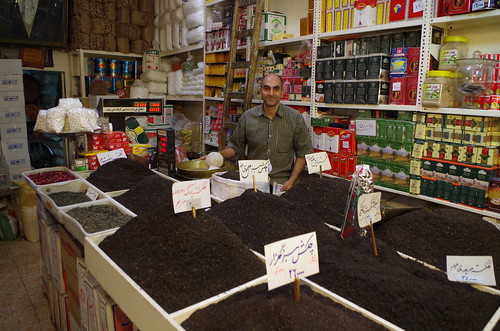
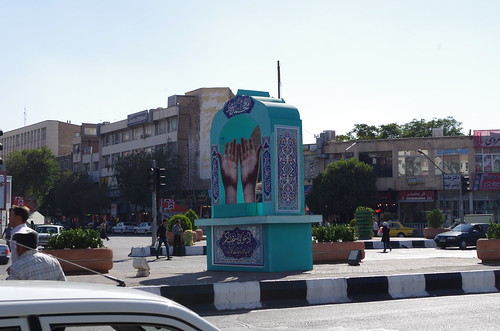
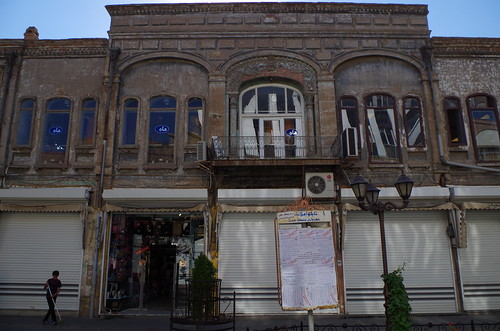
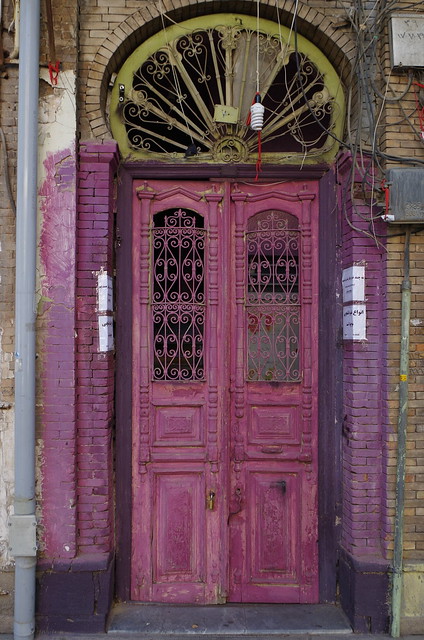
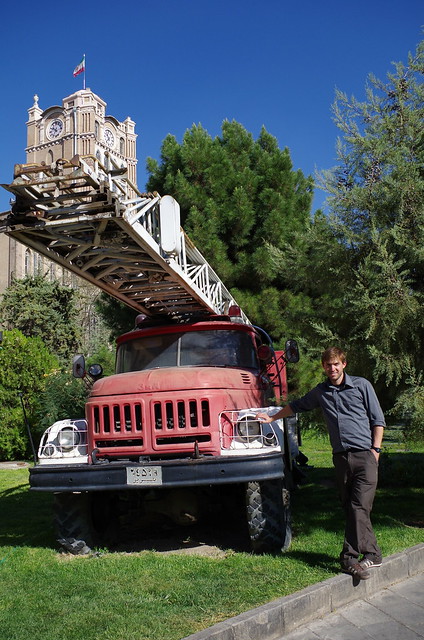

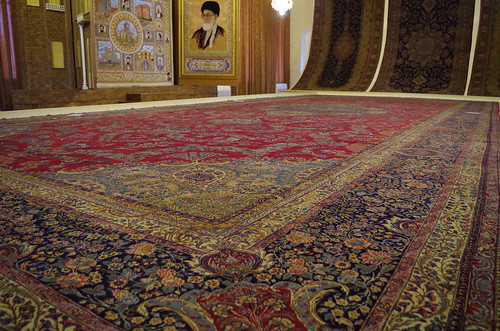

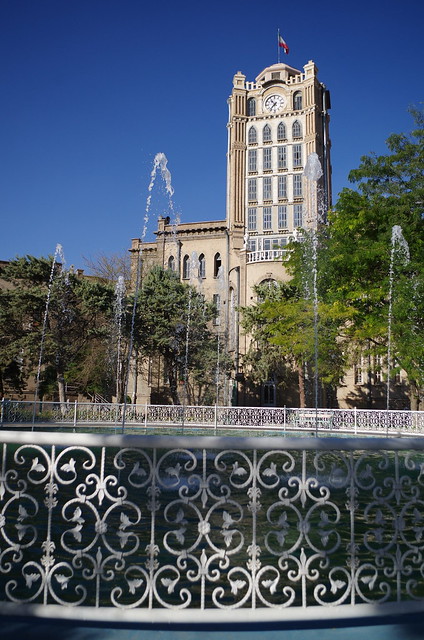
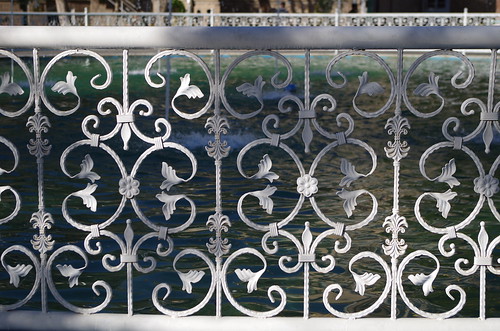


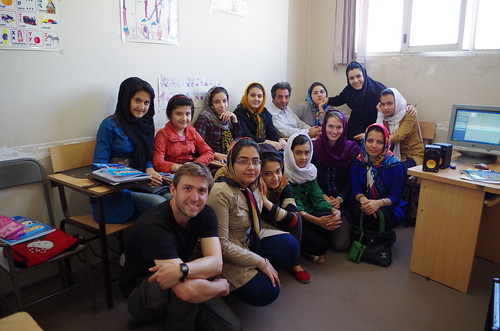
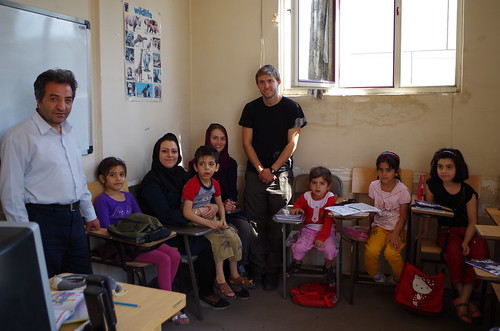
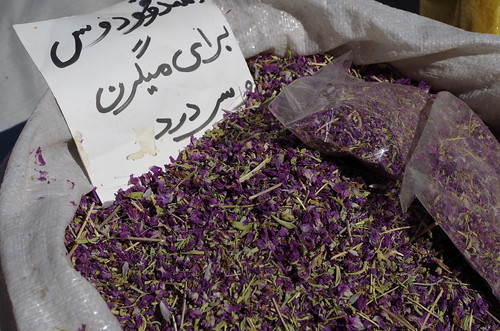
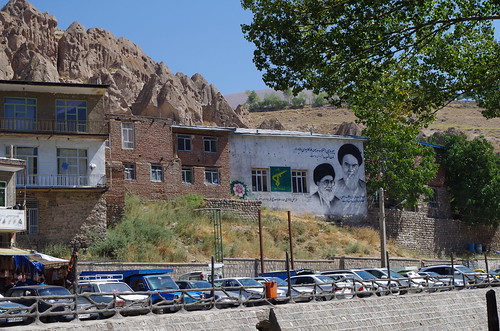

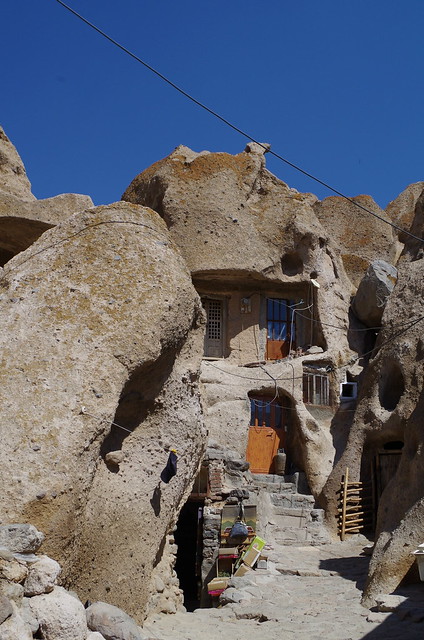
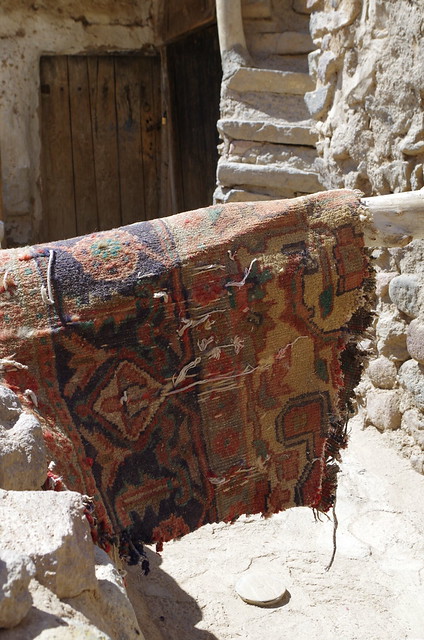

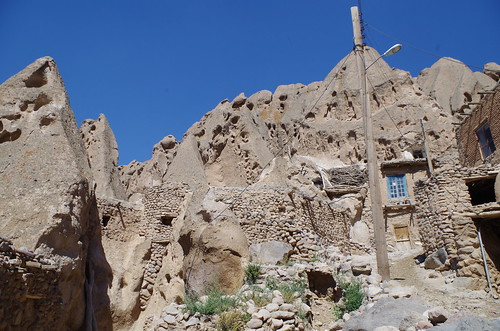

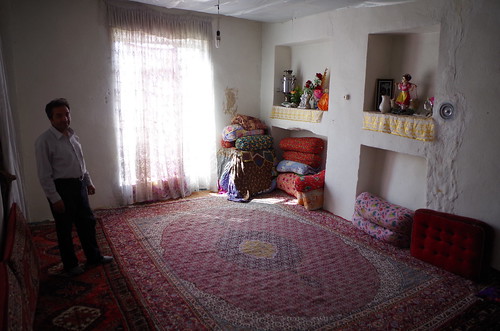
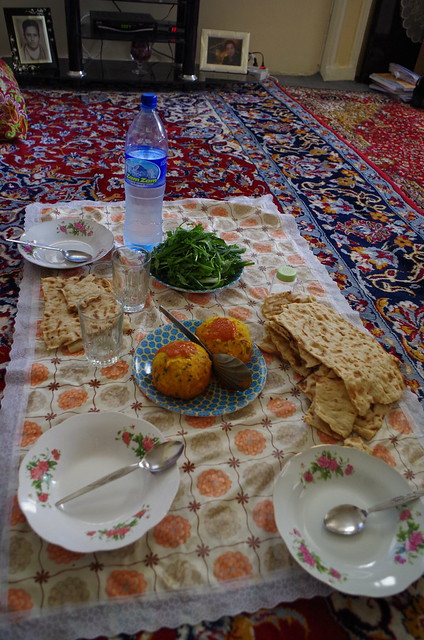
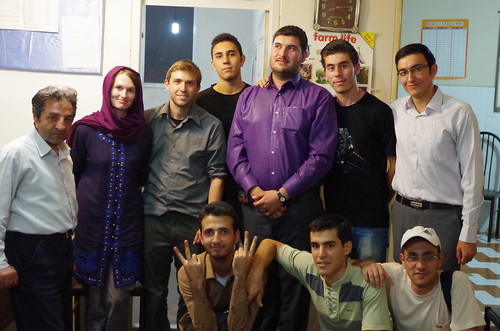
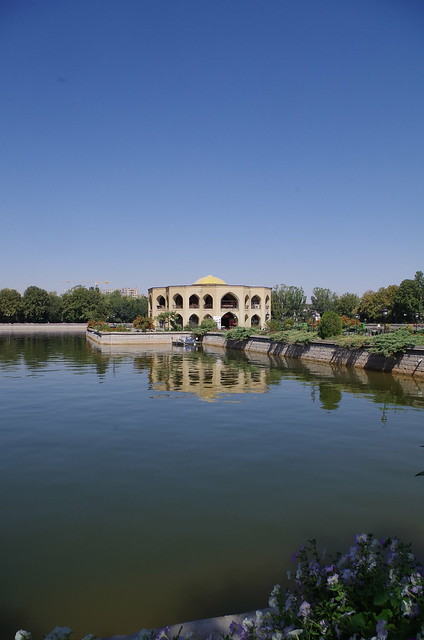
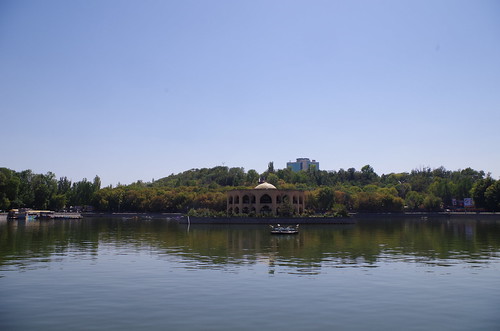
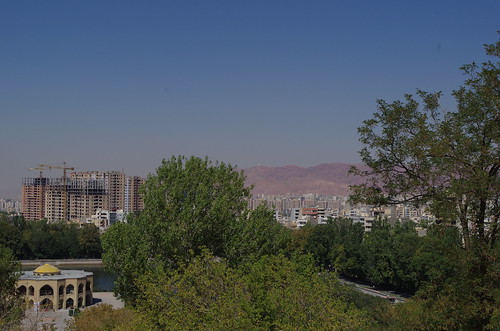
No comments:
Post a Comment